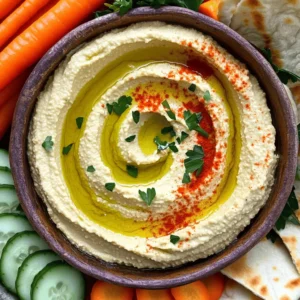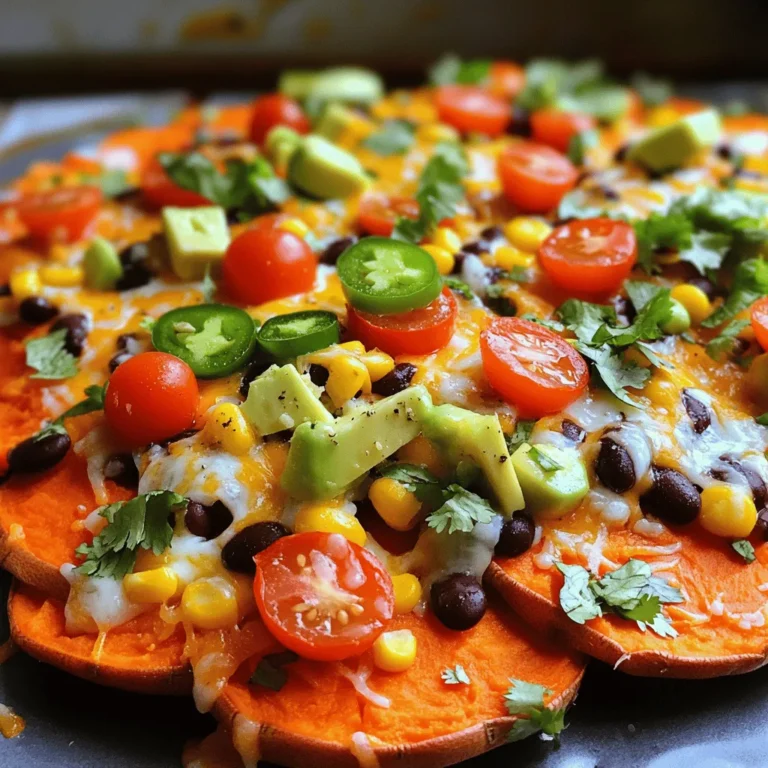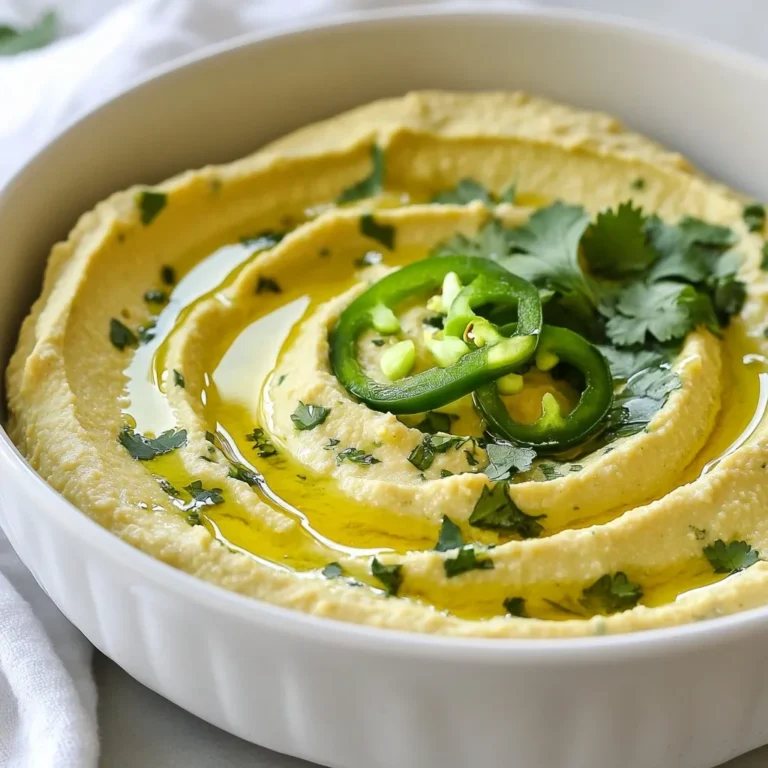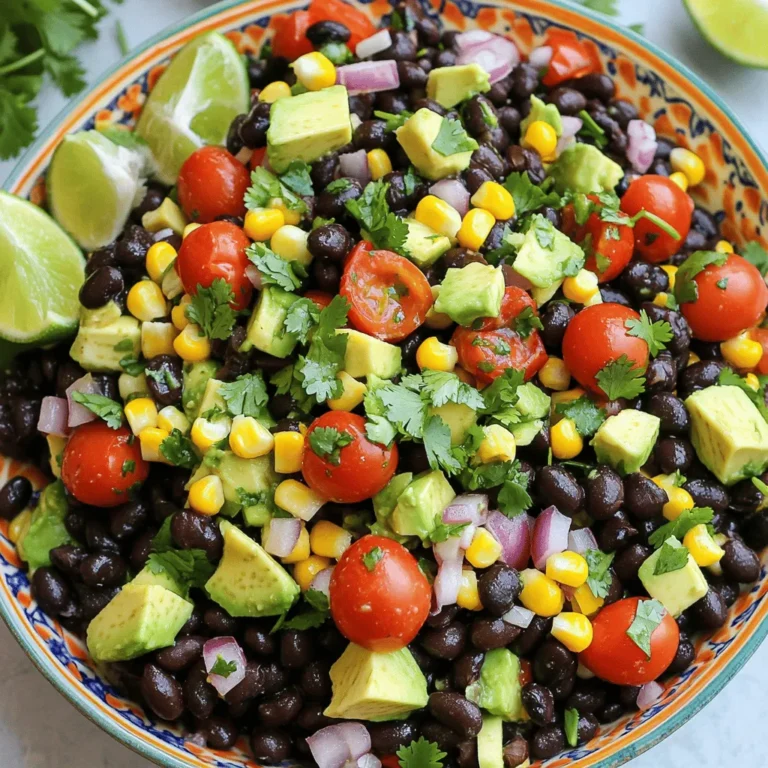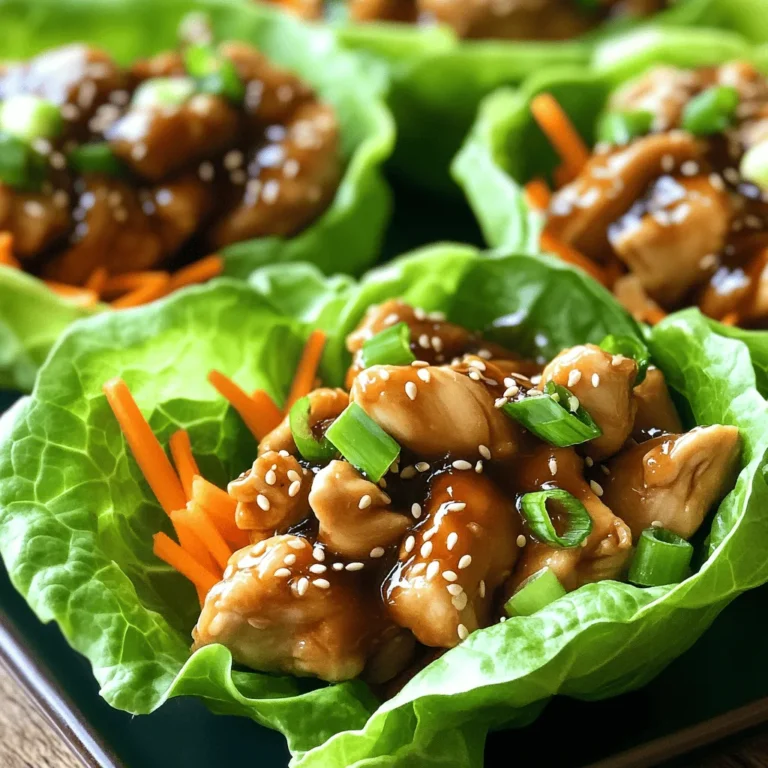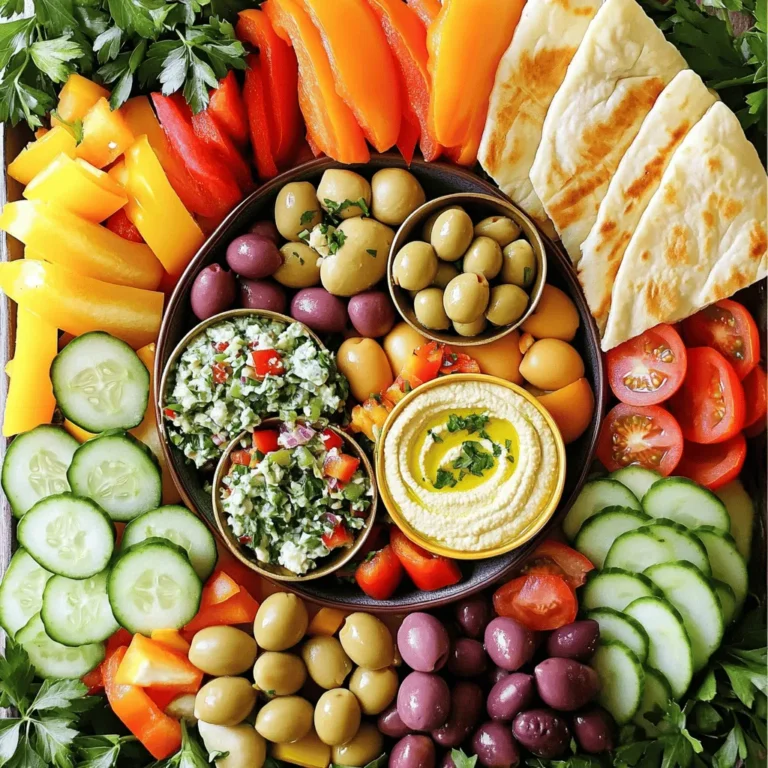Lemon Garlic Hummus Simple and Flavorful Dip Recipe
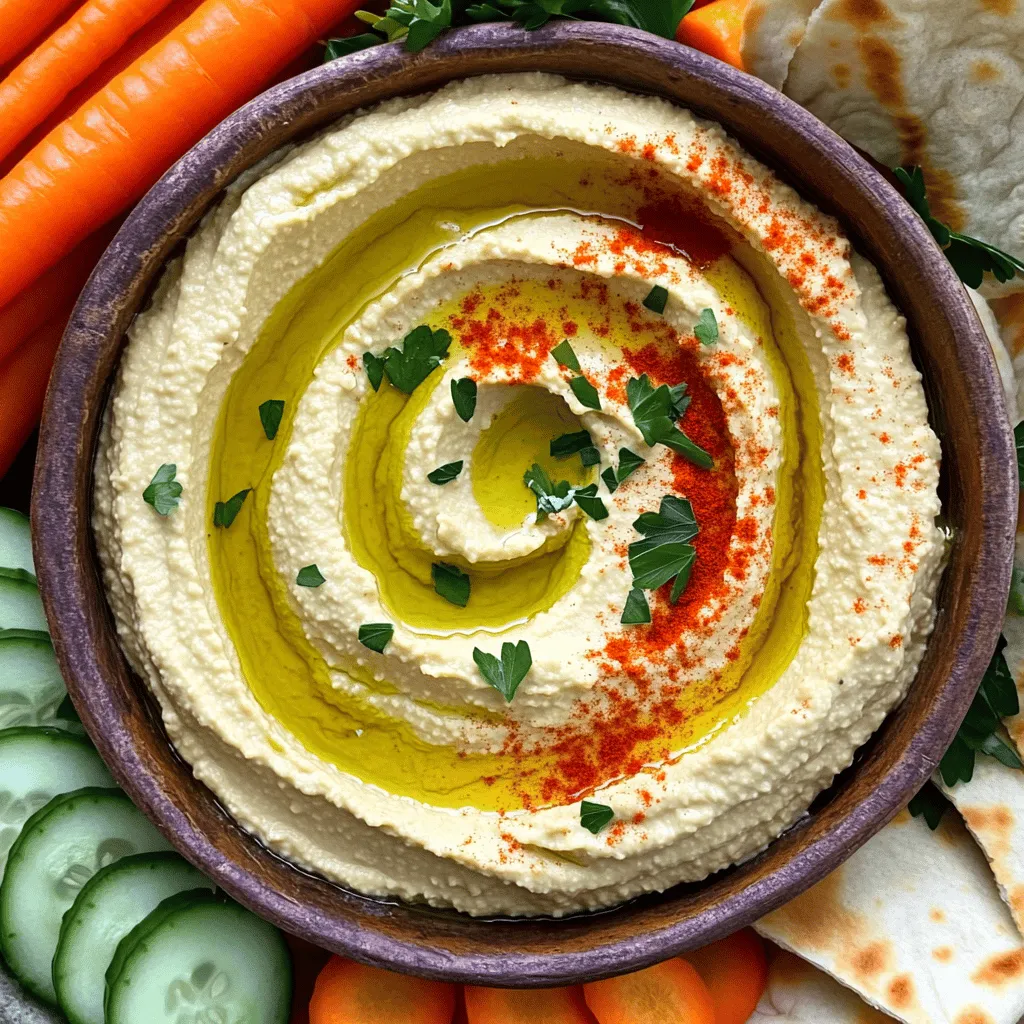
Looking for a tasty dip that’s easy to make? This Lemon Garlic Hummus recipe is just what you need! With simple ingredients and bold flavors, it’s perfect for snacking or impressing guests. I’ll guide you step-by-step, share tips for creaminess, and even suggest great serving ideas. Get ready to enjoy a dip that brightens every occasion! Let’s dive into this delicious, zesty treat!
Ingredients
Main Ingredients for Lemon Garlic Hummus
To make this zesty dip, gather these main ingredients:
– 1 can (15 oz) chickpeas, drained and rinsed
– 3 tablespoons tahini
– 2 cloves garlic, finely minced
– 2 tablespoons extra virgin olive oil
– Juice of 1 large, fresh lemon
– 1/2 teaspoon ground cumin
– Sea salt, to taste
– 3-4 tablespoons cold water (adjust as needed)
These ingredients create a smooth and creamy base. The chickpeas add protein and fiber. Tahini gives a rich, nutty flavor. Garlic adds a punch, while lemon brings brightness. Cumin adds warmth and depth. Each ingredient plays a role in the flavor.
Optional Garnishes and Toppings
You can add extra flair with these toppings:
– Smoked paprika
– Freshly chopped parsley
These garnishes enhance the dish’s look and taste. Smoked paprika adds a slight smokiness. Chopped parsley gives a fresh, vibrant touch. You can also drizzle olive oil on top for added richness.
Equipment Needed
To prepare this hummus, you will need:
– Food processor
– Measuring spoons
– Lemon juicer (optional)
– Serving bowl
A food processor makes blending easy and quick. Measuring spoons ensure you use the right amounts. A lemon juicer helps extract juice efficiently. Having a serving bowl ready lets you present the hummus beautifully.
Step-by-Step Instructions
Preparation of Ingredients
Start by gathering all your ingredients. You will need:
– 1 can (15 oz) chickpeas, drained and rinsed
– 3 tablespoons tahini
– 2 cloves garlic, finely minced
– 2 tablespoons extra virgin olive oil
– Juice of 1 large, fresh lemon
– 1/2 teaspoon ground cumin
– Sea salt, to taste
– 3-4 tablespoons cold water (adjust as needed)
– Smoked paprika and freshly chopped parsley for garnish
Make sure everything is ready. This helps the process go smoothly.
Blending the Hummus
Add the chickpeas, tahini, garlic, and olive oil to your food processor. Next, squeeze in the lemon juice. Be careful to catch any seeds. Add the ground cumin for extra flavor.
Secure the lid tightly. Blend for about 30 seconds. Stop and scrape down the sides to mix well. Check the texture; it should be smooth and creamy.
Final Adjustments for Flavor
Taste your hummus. Add sea salt to make it pop. Blend again to mix the salt in well. If the hummus is too thick, add cold water one tablespoon at a time. Keep blending until you reach your desired creaminess.
Do a final taste test. Adjust the lemon or garlic if needed. Transfer the hummus to a bowl. Drizzle some olive oil on top. Sprinkle smoked paprika and chopped parsley for a fresh look.
Your zesty lemon garlic hummus is now ready to enjoy!
Tips & Tricks
How to Achieve Creamy Hummus
To get a creamy hummus, start with good chickpeas. I prefer using canned chickpeas. Rinse them well to remove any canning liquid. This helps keep your dip smooth. When blending, use enough cold water. Add it slowly, one tablespoon at a time. If you want it even creamier, blend longer. Don’t rush this step.
Best Practices for Garlic Flavor
Garlic is key for flavor in this dip. Always use fresh garlic for the best taste. Mince the garlic finely to spread the flavor evenly. If you want a milder taste, try roasting the garlic first. Roasting brings out sweetness and smoothness. This way, the garlic won’t be too strong.
Serving Suggestions for Lemon Garlic Hummus
Serve your lemon garlic hummus with fun dippers. I love warm pita bread and crunchy veggies. Carrot sticks and cucumber slices add great color. You can also use crackers for a nice crunch. For a special touch, drizzle olive oil on top and sprinkle paprika. This makes your dish look beautiful and appetizing.
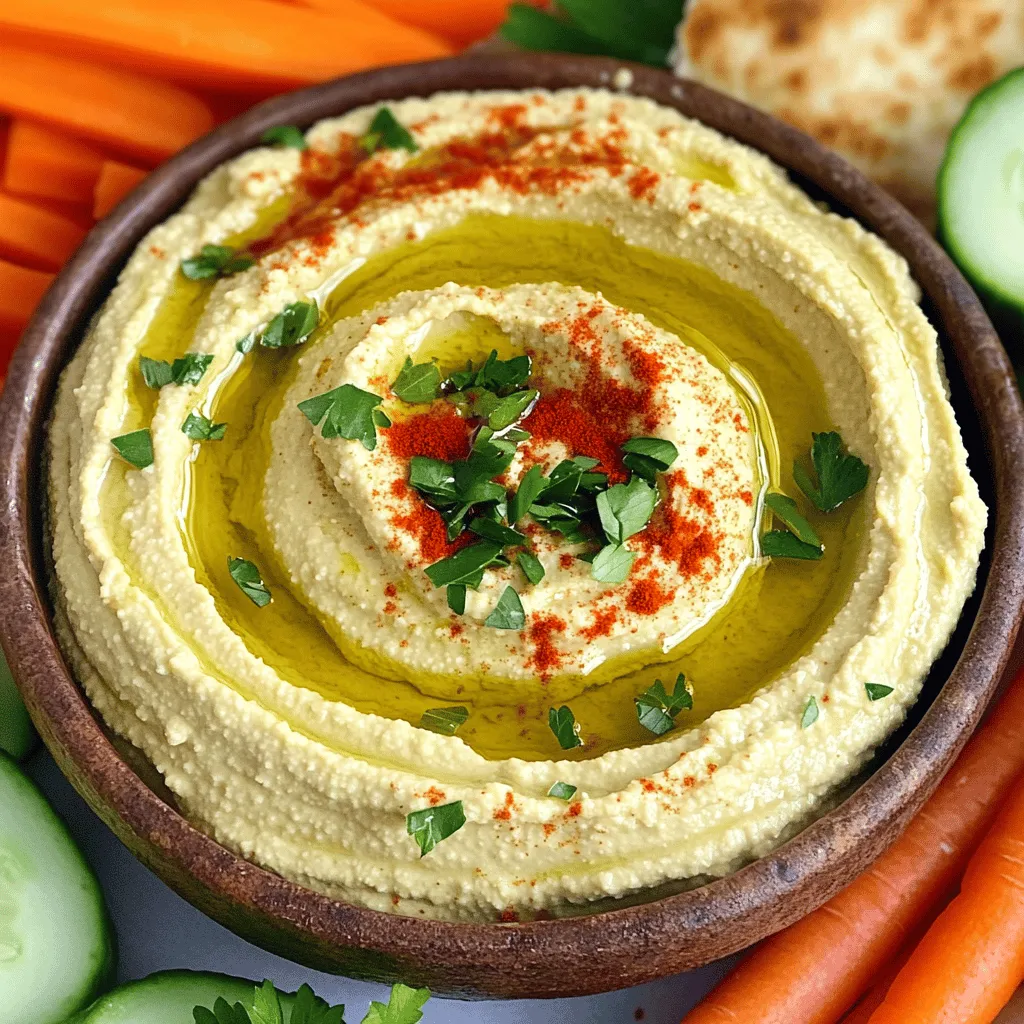
Variations
Adding Spices for Extra Flavor
You can spice up your lemon garlic hummus easily. Try adding a pinch of cayenne for heat. Cumin gives it a warm taste, while smoked paprika adds depth. You can also mix in fresh herbs like cilantro or dill for a fresh twist. These spices make the dip more fun and exciting.
Substituting Ingredients
If you want to switch things up, you can change some ingredients. Use white beans instead of chickpeas for a milder flavor. Swap tahini for sunflower seed butter if you have a nut allergy. You can also use lemon zest for more citrus flavor. Each change gives a new taste to the hummus.
Pairing Options for Different Diets
Lemon garlic hummus pairs well with many foods. For a vegan diet, serve it with veggies like carrots and bell peppers. If you are gluten-free, use rice crackers or corn chips. For a Mediterranean flair, try warm pita bread. This dip is versatile, making it perfect for any gathering or snack time.
Storage Info
How to Store Leftover Hummus
After you enjoy your hummus, store any leftovers in the fridge. Transfer the hummus to an airtight container. This helps keep it fresh. Make sure to cover the top with a thin layer of olive oil. This layer adds flavor and prevents drying.
Freezing Lemon Garlic Hummus
You can freeze your lemon garlic hummus for later use. Portion it into small containers. Leave some space at the top, as it will expand when frozen. You can keep it in the freezer for about three months. To thaw, place it in the fridge overnight or on the counter for a few hours. Stir well before serving.
Best Containers for Storage
Choose glass or BPA-free plastic containers for storage. Glass containers help keep flavors intact. They are also safe for both freezing and heating. If using plastic, ensure it is labeled as freezer-safe. Avoid metal containers, as they may react with the hummus.
FAQs
Can I make Lemon Garlic Hummus ahead of time?
Yes, you can make Lemon Garlic Hummus ahead of time. It tastes great after a few hours in the fridge. In fact, the flavors blend better when it sits. I often prepare it a day before a party. This way, I save time and enjoy the gathering.
What can I serve with Lemon Garlic Hummus?
You can serve Lemon Garlic Hummus with many tasty options. Here are some ideas:
– Warm pita bread
– Crisp cucumber slices
– Colorful carrot sticks
– Bell pepper strips
– Crackers or chips
Each of these pairs well with the zesty hummus. The crunch and flavor create a great mix.
How long does homemade hummus last in the fridge?
Homemade hummus lasts about five to seven days in the fridge. Make sure to store it in an airtight container. If you see any signs of spoilage, it’s best to throw it out. To keep it fresh, I often recommend placing a thin layer of olive oil on top. This helps seal in moisture and flavor. For the best taste, enjoy it within a few days!
In this post, we explored how to make Lemon Garlic Hummus. We covered the main ingredients, optional toppings, and required equipment. I shared easy steps for prepping, blending, and fine-tuning flavors. You learned tips for creamy texture and garlic intensity.
We also discussed delicious variations and storage methods. Remember, you can make hummus ahead of time and enjoy it fresh for days. Experiment with different flavors and pairings. Your hummus can be a tasty, healthy snack for everyone!
